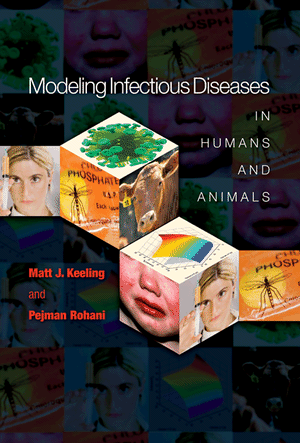Networks provide a unified way to
think about the interaction between individuals or populations, and are
especially useful when each individual is in direct contact with only a
small proportion of the population. The primary advantage of network
models is their ability to capture complex individual-level structure
in a simple framework. To specify all the connections within a network,
we can form a matrix from all the interaction strengths which we expect
to be sparse with the majority of values being zero. Usually, for
simplicity, two individuals (or populations) are either assumed to be
connected with a fixed interaction strength or unconnected (and
therefore have an interaction strength of zero). In such cases, the
network of contacts is specified by a graph matrix
G, where
Gij
is 1 if individuals
i and
j are connected, or 0 otherwise.
We generally assume that the matrix is symmetric such that a connection
allows infection to pass in both directions.
Networks have many similarities with individual-based spatial models
(program 7.5 & 7.6), in that spatial interactions can be defined in
terms of a kernel. However, in networks, contacts tend to be of equal
strength and limited in number. This can be used to considerable
advantage in simulations:
where
Ij is one if
and only if individual
j is
infectious.


